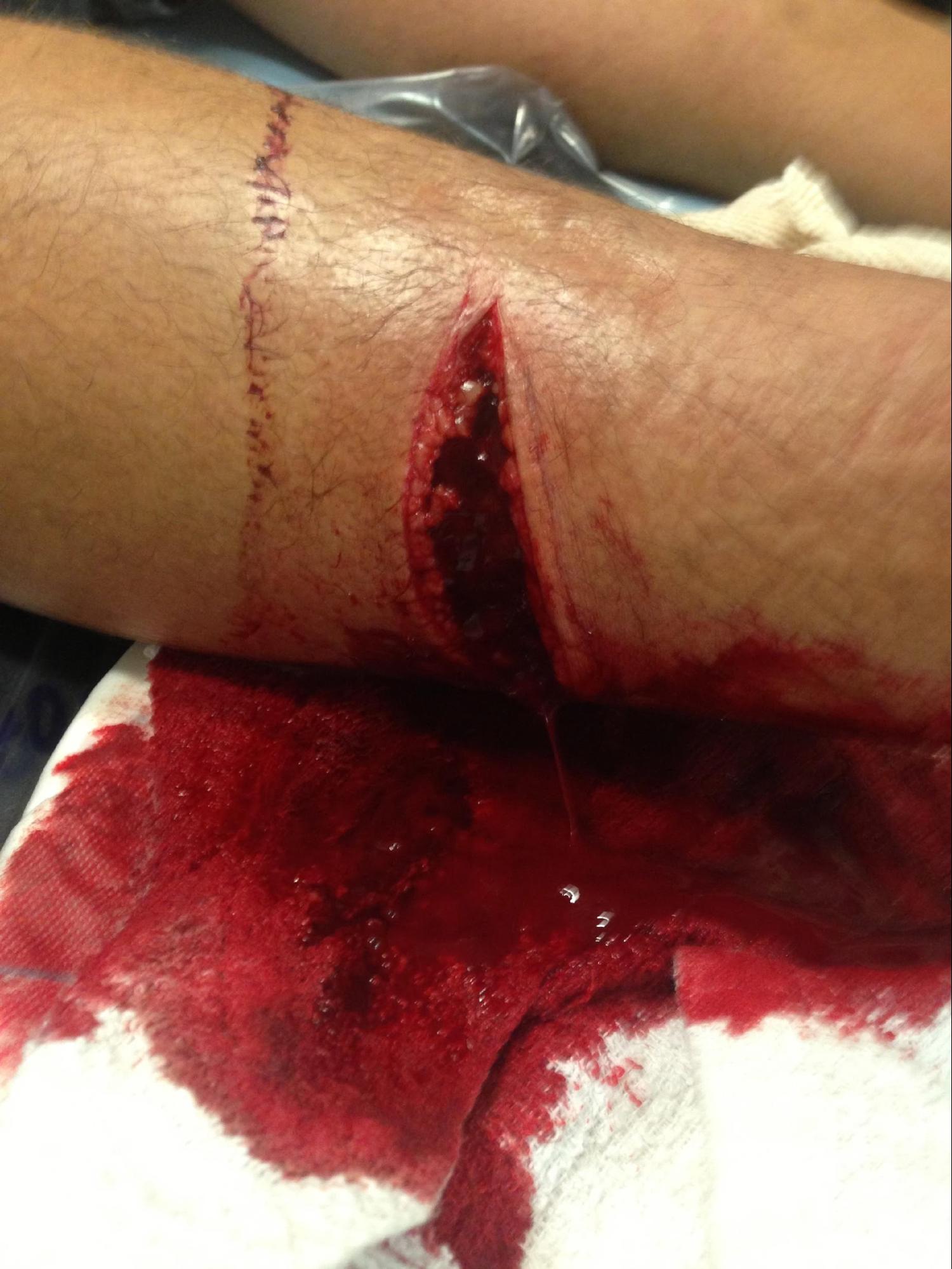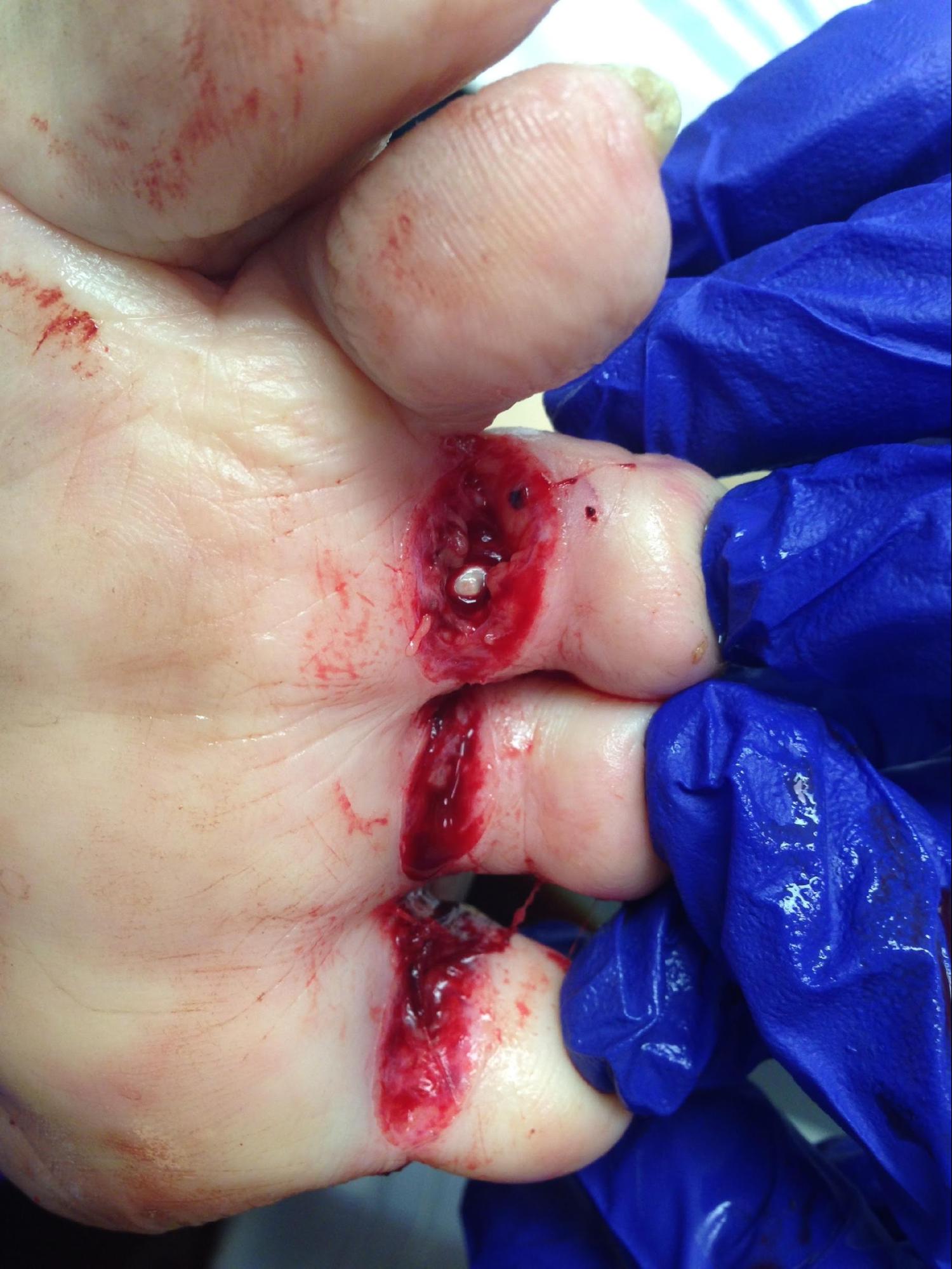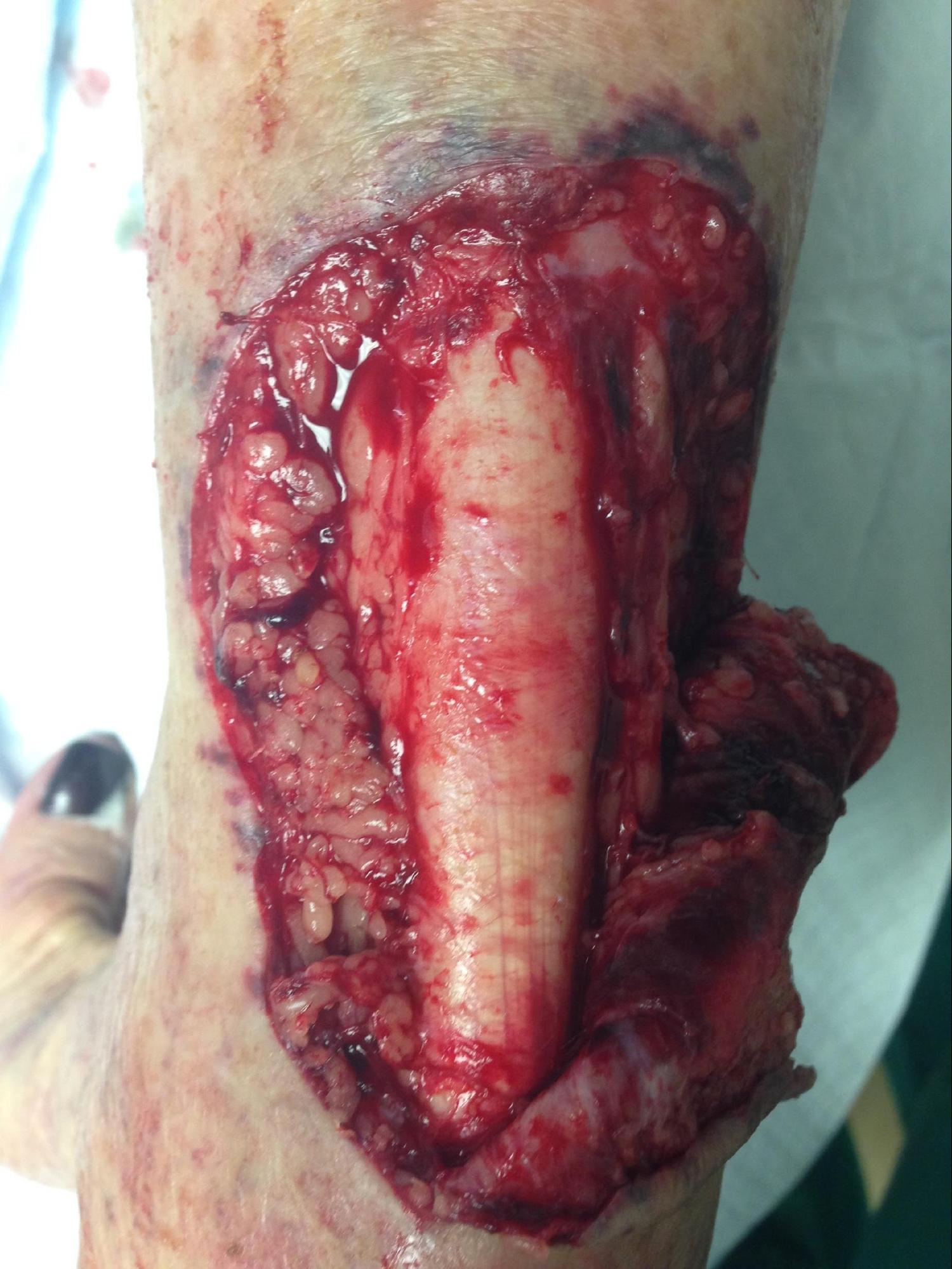[1]
Brinker D, Hancox JD, Bernardon SO. Assessment and initial treatment of lacerations, mammalian bites, and insect stings. AACN clinical issues. 2003 Nov:14(4):401-10
[PubMed PMID: 14595200]
[2]
Hollander JE, Singer AJ, Valentine SM, Shofer FS. Risk factors for infection in patients with traumatic lacerations. Academic emergency medicine : official journal of the Society for Academic Emergency Medicine. 2001 Jul:8(7):716-20
[PubMed PMID: 11435186]
[3]
Singer AJ, Quinn JV, Thode HC Jr, Hollander JE, TraumaSeal Study Group. Determinants of poor outcome after laceration and surgical incision repair. Plastic and reconstructive surgery. 2002 Aug:110(2):429-35; discussion 436-7
[PubMed PMID: 12142655]
[4]
Cruse PJ, Foord R. A five-year prospective study of 23,649 surgical wounds. Archives of surgery (Chicago, Ill. : 1960). 1973 Aug:107(2):206-10
[PubMed PMID: 4719566]
[5]
Finnell JT, Knopp R, Johnson P, Holland PC, Schubert W. A calibrated paper clip is a reliable measure of two-point discrimination. Academic emergency medicine : official journal of the Society for Academic Emergency Medicine. 2004 Jun:11(6):710-4
[PubMed PMID: 15175216]
[6]
Mankowitz SL. Laceration Management. The Journal of emergency medicine. 2017 Sep:53(3):369-382. doi: 10.1016/j.jemermed.2017.05.026. Epub 2017 Aug 25
[PubMed PMID: 28847677]
[7]
Karounis H, Gouin S, Eisman H, Chalut D, Pelletier H, Williams B. A randomized, controlled trial comparing long-term cosmetic outcomes of traumatic pediatric lacerations repaired with absorbable plain gut versus nonabsorbable nylon sutures. Academic emergency medicine : official journal of the Society for Academic Emergency Medicine. 2004 Jul:11(7):730-5
[PubMed PMID: 15231459]
Level 1 (high-level) evidence
[8]
DeBoard RH, Rondeau DF, Kang CS, Sabbaj A, McManus JG. Principles of basic wound evaluation and management in the emergency department. Emergency medicine clinics of North America. 2007 Feb:25(1):23-39
[PubMed PMID: 17400071]
[9]
Pushpakumar SB, Hanson RP, Carroll S. The application of Steri-Strips. Plastic and reconstructive surgery. 2004 Mar:113(3):1106-7
[PubMed PMID: 15108939]
[10]
Perelman VS, Francis GJ, Rutledge T, Foote J, Martino F, Dranitsaris G. Sterile versus nonsterile gloves for repair of uncomplicated lacerations in the emergency department: a randomized controlled trial. Annals of emergency medicine. 2004 Mar:43(3):362-70
[PubMed PMID: 14985664]
Level 1 (high-level) evidence
[11]
Wilson JL, Kocurek K, Doty BJ. A systematic approach to laceration repair. Tricks to ensure the desired cosmetic result. Postgraduate medicine. 2000 Apr:107(4):77-83, 87-8
[PubMed PMID: 10778412]
Level 1 (high-level) evidence
[12]
Brogan GX Jr, Giarrusso E, Hollander JE, Cassara G, Maranga MC, Thode HC. Comparison of plain, warmed, and buffered lidocaine for anesthesia of traumatic wounds. Annals of emergency medicine. 1995 Aug:26(2):121-5
[PubMed PMID: 7618771]
[13]
Sultan J. Towards evidence based emergency medicine: best BETs from the Manchester Royal Infirmary. The effect of warming local anaesthetics on pain of infiltration. Emergency medicine journal : EMJ. 2007 Nov:24(11):791-3
[PubMed PMID: 17954843]
[14]
Singer AJ, Hollander JE, Quinn JV. Evaluation and management of traumatic lacerations. The New England journal of medicine. 1997 Oct 16:337(16):1142-8
[PubMed PMID: 9329936]
[15]
Zempsky WT, Karasic RB. EMLA versus TAC for topical anesthesia of extremity wounds in children. Annals of emergency medicine. 1997 Aug:30(2):163-6
[PubMed PMID: 9250639]
[16]
Song J, Kim H, Park E, Ahn JH, Yoon E, Lampotang S, Gravenstein N, Choi S. Pre-emptive ice cube cryotherapy for reducing pain from local anaesthetic injections for simple lacerations: a randomised controlled trial. Emergency medicine journal : EMJ. 2018 Feb:35(2):103-107. doi: 10.1136/emermed-2017-206585. Epub 2017 Oct 12
[PubMed PMID: 29025864]
Level 1 (high-level) evidence
[17]
Valente JH, Forti RJ, Freundlich LF, Zandieh SO, Crain EF. Wound irrigation in children: saline solution or tap water? Annals of emergency medicine. 2003 May:41(5):609-16
[PubMed PMID: 12712026]
[18]
Forsch RT, Little SH, Williams C. Laceration Repair: A Practical Approach. American family physician. 2017 May 15:95(10):628-636
[PubMed PMID: 28671402]
[19]
Singer AJ, Dagum AB. Current management of acute cutaneous wounds. The New England journal of medicine. 2008 Sep 4:359(10):1037-46. doi: 10.1056/NEJMra0707253. Epub
[PubMed PMID: 18768947]


